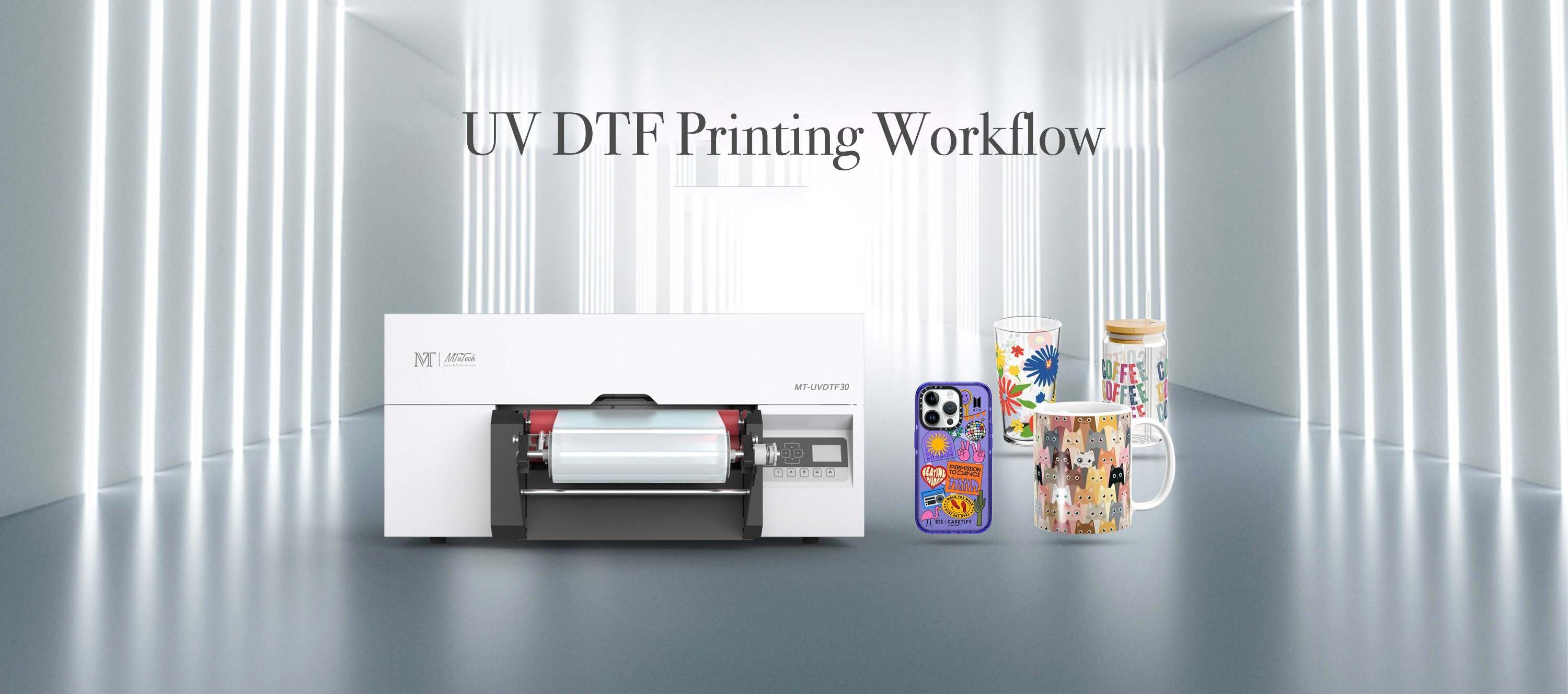 Introduction
Introduction
In the world of digital printing, UV DTF (Direct to Film) printers have become increasingly popular due to their versatility and high-quality output. Whether you're printing on textiles, promotional items, or custom products, these printers deliver vibrant results. However, like any piece of technology, maintaining your UV DTF printer is crucial for optimal performance. In this blog post, we will explore essential maintenance tips and troubleshooting advice to keep your printer running smoothly.
Understanding UV DTF Printers
UV DTF printers utilize ultraviolet light to cure inks instantly onto a variety of substrates. Unlike traditional methods that require drying time, the UV curing process allows for faster production and immediate handling. This efficiency makes UV DTF printers an excellent choice for businesses looking to streamline their operations.
Importance of UV DTF Printer Maintenance
Regular maintenance of your UV DTF printer not only prolongs its lifespan but also ensures high-quality output. Neglecting maintenance can lead to a range of issues, including:
Poor print quality
Increased downtime
Higher operational costs
Frequent repairs and replacements
By following proper maintenance routines, you can prevent these problems and enjoy the benefits of consistent, high-quality prints.
Essential Maintenance Tips
1. Regular Cleaning
One of the most important aspects of maintaining a UV DTF printer is regular cleaning. This prevents ink buildup and ensures that the print heads function correctly. Follow these steps for effective cleaning:
Use a soft lint-free cloth to wipe the exterior of the printer.
Clean the print heads with the manufacturer-recommended cleaning solution.
Run a cleaning cycle using the printer's software to clear any clogs in the nozzles.
Remove excess ink from the ink pads and internal components.
2. Check Ink Levels
Ink levels should be monitored regularly to avoid running out during print jobs, which can lead to inconsistent colors and wasted materials. Here’s how to manage ink levels effectively:
Keep an eye on the ink level indicators on your printer's display.
Order replacement cartridges well in advance to avoid shortages.
Use high-quality inks compatible with your printer model to ensure optimal results.
3. Calibration and Alignment
To maintain print quality, it's essential to perform regular calibration and alignment. This helps ensure that colors are accurate and prints aren’t misaligned. Check your printer's manual for specific guidelines, but general steps include:
Running alignment tests recommended by the manufacturer.
Adjusting the print head height and tracking settings.
Performing color calibration using test patterns.
4. Environment Control
The environment in which your UV DTF printer operates can greatly impact its performance. Ensure that:
The printer is in a temperature-controlled space to prevent ink from drying too quickly.
Humidity levels are stable, ideally between 40-60%.
Dust and debris are minimized to avoid print head clogs.
5. Software Updates
Manufacturers often release software updates that improve functionality and fix bugs. Regularly check for updates from the printer manufacturer to keep your system current. Benefits of keeping your software up-to-date include:
Enhanced features that improve usability.
Bug fixes that resolve known issues.
Increased compatibility with newer software and hardware.
Troubleshooting Common Issues
If you encounter problems with your UV DTF printer, don’t panic. Most issues are solvable with a few troubleshooting steps. Here are some common problems and their solutions:
1. Poor Print Quality
If you notice streaks, fading, or irregular colors in your prints, consider the following:
Check for clogs in the print heads and run a cleaning cycle if necessary.
Ensure the ink cartridges are full and properly installed.
Verify that the media settings match the type of substrate you are using.
2. Print Head Clogging
Clogged print heads are a common issue in UV DTF printing. To fix this, you can:
Run the printer’s automatic cleaning cycle regularly.
Manually clean the print heads with appropriate solutions.
Use maintenance fluids recommended by the manufacturer to prevent buildup.
3. Ink Smudging or Smearing
Ink smudging can occur during printing or drying. To prevent and troubleshoot this issue, try the following:
Ensure proper curing with the right UV lamp settings.
Check that the print speed matches the curing capability of the printer.
Reduce ink saturation levels to minimize smudging.
Conclusion
Maintaining your UV DTF printer is key to achieving consistent, high-quality prints. By following the maintenance tips outlined in this guide and addressing common issues promptly, you can ensure that your printer remains in top condition. For businesses looking to invest in high-quality UV DTF printers, remember that proper care and attention will pay off in the long run. If you're in search of reliable printers, explore our high-quality UV-DTF printers here for your printing needs.
FAQ
How often should I clean my UV DTF printer?
It’s recommended to clean your printer after every few print jobs or when you notice a decline in print quality. Regular maintenance cleaning can prevent ink buildup.
What can I do if my UV DTF printer is not curing the ink properly?
If the ink is not curing properly, check the UV lamp to ensure it is functioning correctly. Ensure your substrate is compatible with UV curing and adjust the speed settings if necessary.
What are the common signs of a clogged print head?
Common signs of a clogged print head include inconsistent print quality, lines or streaks in the print, and irregular colors. Regular cleaning can help prevent clogs.
Is it important to use manufacturer-recommended inks?
Yes, using manufacturer-recommended inks can improve print quality and reduce the risk of clogs or damage to your printer, ensuring optimal performance.
Can environmental factors affect my printer's performance?
Absolutely. Temperature, humidity, and dust levels can significantly impact print quality and the printer's overall functionality. Maintaining a controlled environment is essential for optimal performance.
